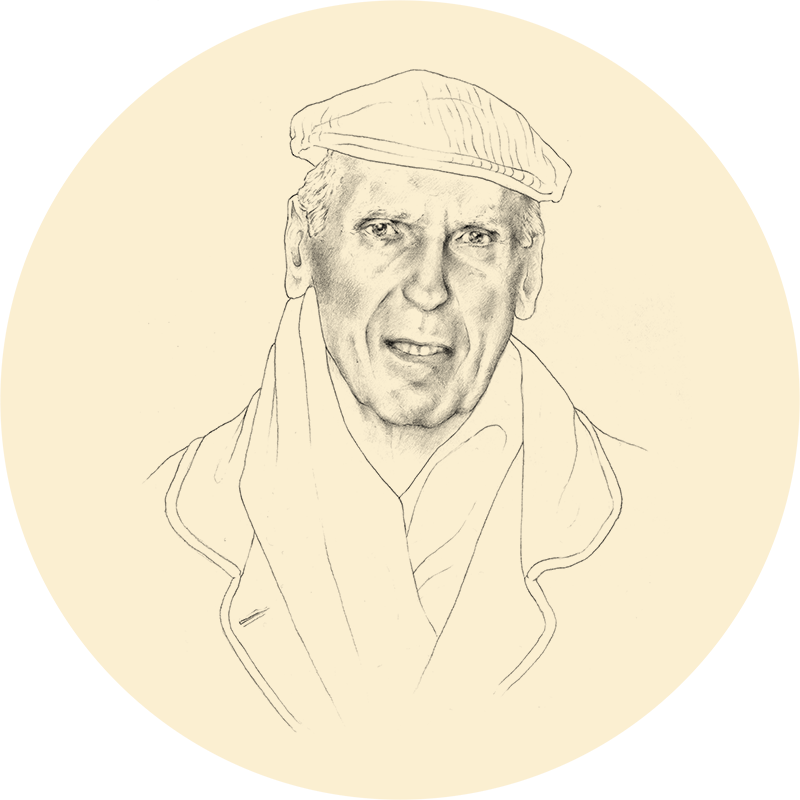Everything that happened after the end of the war, for you, was the result of your youth, your twenty years lived without pausing, without a break. You believed in the duty of political activism and sought out your role in society, as an intellectual and an artist, without allowing the former to get the upper hand over the latter. Do you remember, Ernesto, that discussion at your house, on Via Borgonovo? Fabrizio Onofri, introduced to you by Antonello Trombadori, said that intellectuals should devote themselves completely to the Party, since only in this way could they truly be part of the working class. You and Alfonso Gatto, on the other hand, thought intellectuals should write, paint, do their work without constraints, and then take part in politics, as citizens. Gatto was so angry he yelled all evening. Your character was different, and after eleven you sent the guests home, because in the morning you always rose at the same hour as the workers.

You were everywhere for life, for reality, Ernesto. You knew and took part in the sufferings of what was still a cruelly feudal Southern Italy. You became a member of the city council of Melissa, in Calabria, to help the peasants that had occupied abandoned land. You traveled, you loved Paris, Moscow, London, Havana. But you always knew you were a Lombard painter. Your skies remained those of Manzoni, which are “so beautiful, when they are beautiful.” You roamed around Milan, photographing it foot by foot, from the ruins of Porta Volta still gutted by bombs to the balconies of the buildings in the canal zone. “I will paint my city as long as I live,” you said. You saw it change so quickly that it seemed as if you were trying to capture its memory on canvas. The factories of Via Palizzi, before Quarto Oggiaro was even built, the traffic on the Ponte della Ghisolfa, the same traffic shown by Luchino Visconti in Rocco and His Brothers – noble, like you, and a communist, like you. You sought life in those places. The people, seen as an infinite narrative of stories, of humanity, not as a formless mass.
When the bomb exploded at Piazza Fontana you felt the need to shout it – you, a firm pacifist in a period of desperate violence, composed of resurgences of fascism, almost as if the sacrifice of your young comrades, just one generation ago, had been totally useless. It took you six years to paint Un popolo di volti (A People of Faces). It was precisely during that period that Onorina came to work with you. Day by day she saw the cathedral, the square, the city vanish from your sketches, giving way on that immense canvas to the faces of the people of Milan, the infinite array of persons on hand at the funeral of the victims of the massacre. Milan, the city I love, more than in its buildings exists in its people, you wanted to tell us.
It was necessary to come to grips with reality and “to paint what you love,” you said. Life was not a sin from which to seek redemption through art. The labor of the artist is the same as that of any other man. Effort and joy to be shared, under the same sky of Lombardy. That human sky you wanted to donate to your city when – in the hedonistic, ambitious 1980s – you transformed the facade of your house into an act of urban poetry. “The house of the swallows” was the name you gave to this composition made of over two thousand ceramic tiles, each different from the next, depicting a flight of freedom and peace. A sky that becomes matter, human and poetic, that makes this street even more like a fable, that is there yet is not there, in the heart of the metropolis. “If you look upward, a bit below the real sky, you will see another, earthly sky. It is the dream of the painter for his city.” Your dream for Milan.
